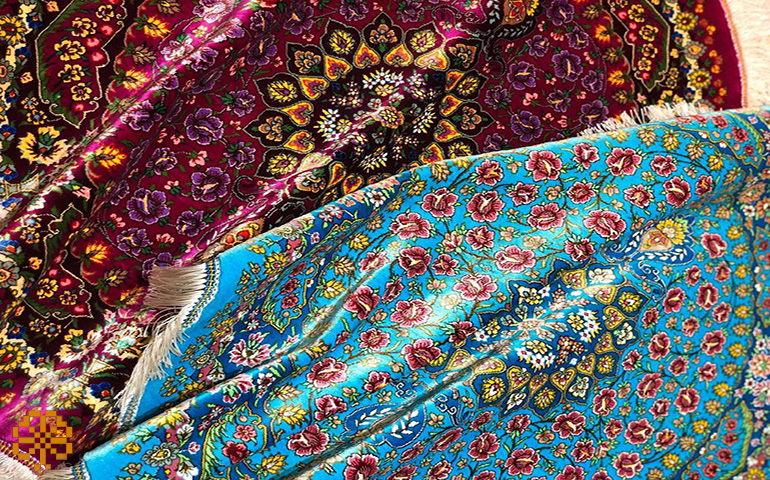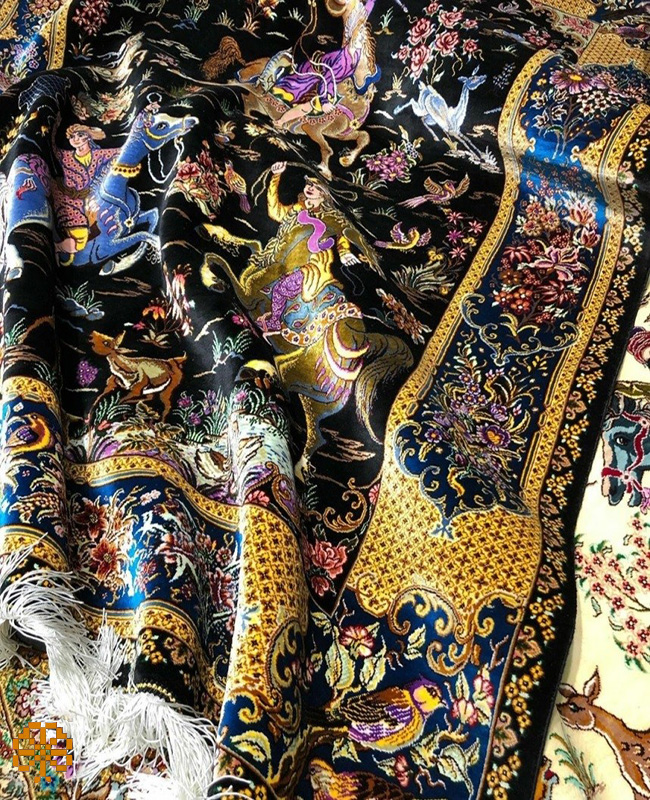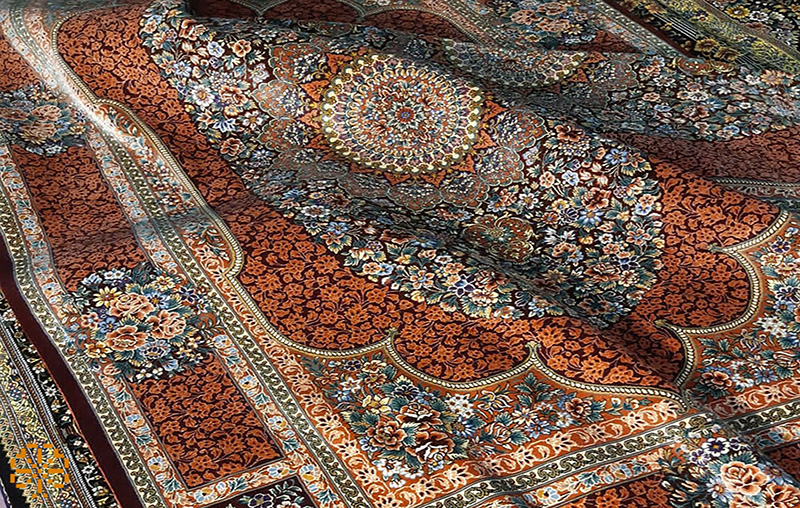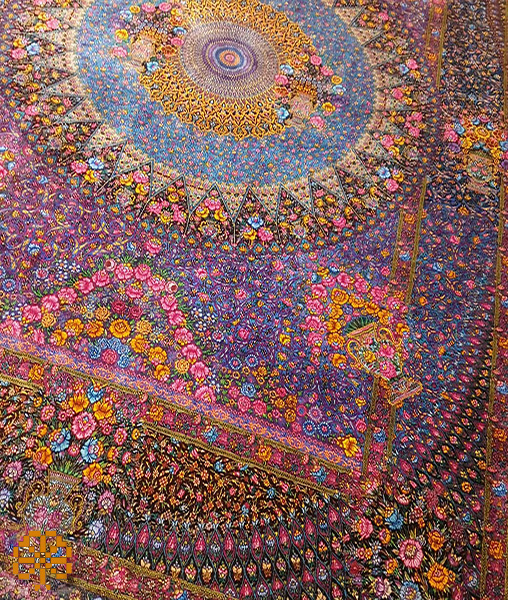Qom handmade silk carpet| The most important features of the design, pattern and color

Qom province to the center of Qom city is one of the provinces of Iran, which is the most remarkable shrine and religious city of Iran after Mashhad, which has been attributed to one of the kings of the Pishdadian dynasty.
Carpet weaving is common in Qom like in other parts of Iran and the production of woolen carpets has been limited in the past but has had an independent design and role. Because Qom has been a city of immigrants since the past, it has hosted people who migrated to this city from different parts of Iran or other countries. Therefore, most of the carpets of the past of Qom were woven by these same immigrants and based on the conventional plans of their homeland.
In the second half of the twentieth century, Iranian carpets were noticed in European and American markets, and for this reason, the people of Qom established carpet weaving workshops to develop economic affairs.
Due to the existence of Kashani merchants and masters who had come to Qom from Kashan to learn carpet weaving, at first the carpets of Qom were very similar to the carpets of Kashan.
The use of repetitive small patterns, various designs and skills in weaving all-silk carpets with high number of rugs caused Qom carpets to gradually acquire unique features in less than a century, which is different from other regions of Iranian carpet weaving.
Continuing the path, using the designs of other regions and the presence of skilled designers and painters, made Qom carpet one of the best and most popular designs and designs in Iran.
Design and Motif in Qom silk carpets
In recent decades, Qom carpets have enjoyed fame and charm due to the unique beauty of design, motif and color along with silk. The designs used in Qom carpets are very diverse and have a wide range. In the past, the designs that were considered for the old carpets of Qom consisted of the famous designs of Shah Abbasi’s elastic and bergamot, taboos and hunting grounds, and these drawings and designs were imitations of the drawings of Kashan and Isfahan.
Over time and with the creativity that the designers of Qom showed and used the best designs used in other parts of the country with changes, the design of carpets in this province underwent fundamental changes and we saw the emergence of a new style in Iranian carpets.
Qom carpet designs follow the principles of other Iranian carpets in terms of general structure and use original designs, but nevertheless, it tries to create innovation in the same designs. In Qom carpets, there is always symmetry and rhythmic composition of components, and even if the symmetry is not a classic symmetry such as elasticity, bergamot, etc., simple repeatability, proper arrangement in different sections and color proportions to achieve a balance are considered. Qom carpets are well noticeable. One of the most important designs of Qom silk carpets is elastic and bergamot, tree, hunting ground, golfarang, etc.
One of the prominent features of Qom carpet designs is the compactness and smallness of the designs (depending on the number) and the elegance of the texture allows Qom carpets to work with the details with detail and elegance. It is not a combination of twisted vasalimas, but round flowers and flowers that are repeated in proportion in the text and create the final design and role with various and usually happy color combinations. Which has created a very appropriate beauty in Qom carpets.
Also, other applications of Qom carpet designs can be the separation of different levels of design from each other.
In some carpets of Qom, the background color is not dominant and the color of flowers is the dominant color of the text, and in the background of some carpets, there are repetitive designs that have been solved in the background of the carpet. Therefore, it can be said that in many silk carpets of Qom, the designs are to a large extent in the service of the design and only cause separation and color variety, which is less seen in Tabriz, Kashan or Nain carpets.
What is the color of Qom silk carpets?
Color and design are two complementary factors that are considered as the most prominent beauty factors in Iranian carpets. Benefits that has given Qom carpet a unique and distinct identity from other regions of Iran. The number of dyes used in Qom carpets was initially limited to 4 to 6 colors, but with the evolution of the initial designs of Qom carpets, the number of colors in Qom carpets has also increased.
Has significantly increased the number of colors used in Qom carpets, so that now some Qom carpets are designed and woven with more than 40 distinct colors, and some these colors are:
snow white, milky white, black , Dark blue, Light beige, Garlic beige, Light khaki, Garlic khaki, Petroleum blue, Light blue, Turquoise blue, Diamond blue, Jade green, Sidi green, Plantain green, Cedar green, Burnt, Light cinnamon, Garlic cinnamon Camel, olive, tomato, garlic gray, light gray, straw cream, washed cream, copper garlic, light copper, onion onion skin, garlic brown, light brown.
Qom carpet expresses its colorful beauty more by filling colorful spaces with a lot of variety and dividing the carpet into different colored levels by using patterns. This beauty in color, especially in Qom silk carpets, and due to the optical properties of silk yarn, finds a special clarity and shine and creates a special effect in terms of light and color intensity. Also, variety of colors and various shades are other factors of color beauty of Qom carpet.






